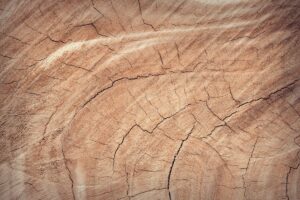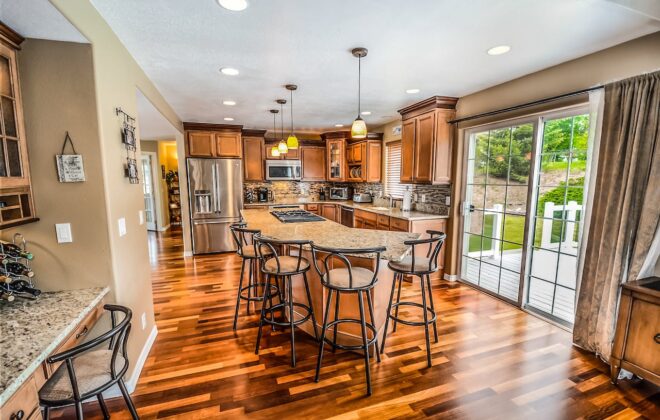What’s the Difference Between Hardwood and Softwood in Carpentry?

When it comes to carpentry, choosing the right wood is essential for achieving the desired look and feel. Hardwood and softwood are two common types of wood that are frequently used in woodwork. But what’s the difference between hardwood and softwood? Understanding the key differences between hardwood and softwood is essential for selecting the best woods for woodwork. In this blog post, we’ll explore the main distinctions between the two, so you can make an informed decision when selecting the right wood for your project.
In CFL Custom Carpentry, we use these woods for specific projects. Both of them plays a significant role in the world of carpentry. Explore our website and see how we make our carpentry projects with these wood types.
Key differences between hardwood and softwood
When it comes to woodworking, understanding the key differences between hardwood and softwood is crucial. These wood types have distinct characteristics that affect their appearance, durability, and overall suitability for various projects. The main difference between the two lies in their cell structure. Hardwood has tightly packed cells that give it its density and durability, while softwood has a looser cell structure, making it lighter and more prone to dents and scratches
Hardwood and softwood: What is hardwood?
Hardwood is a type of wood that is derived from deciduous trees. These trees shed their leaves during certain seasons, which is where the term “deciduous” comes from. Some common hardwood species include oak, maple, and walnut. Hardwood is known for its durability and density, making it an excellent choice for woodworking projects. Its tightly packed cell structure gives it strength and resistance to wear and tear. Between hardwood and softwood, hardwood is ideal for furniture, flooring, cabinetry, and other projects that require long-lasting materials.
Between hardwood and softwood, hardwood also has a beautiful aesthetic, with pronounced grain patterns that add character and charm to any piece. Its natural colors and variations make it highly sought after in the world of interior design. Whether you’re looking to create a classic, rustic look or a modern, sleek design, hardwood can deliver. For the best carpenter in Orlando, hardwood is often the preferred choice for creating high-quality woodwork. Its durability, versatility, and luxurious appeal make it the go-to option for professionals and homeowners alike.
Hardwood and softwood: Pros and cons of using hardwood
When it comes to choosing between hardwood and softwood for your carpentry projects, hardwood has several advantages to consider. First and foremost, hardwood is known for its durability. It can withstand heavy use and is less prone to dents and scratches compared to softwood. This makes hardwood an excellent choice for furniture and cabinetry that will see frequent use.
Another advantage of hardwood is its aesthetic appeal. With its rich and pronounced grain patterns, hardwood adds character and charm to any woodworking project. Whether you’re creating a rustic farmhouse dining table or a modern bookshelf, hardwood can enhance the overall look and feel of your piece. Furthermore, hardwood is a long-lasting material. It can withstand the test of time and retain its beauty for years to come. This makes it a wise investment for homeowners who want durable and high-quality woodwork in their homes.
However, there are a few drawbacks to using hardwood. One is the higher cost compared to softwood. Hardwood is generally more expensive due to its density and durability. Additionally, hardwood can be more challenging to work with due to its hardness. It may require more time and effort to cut and shape compared to softer woods.
Hardwood and Softwood: What is softwood?
Softwood is another common type of wood used in carpentry and woodworking. Unlike hardwood, softwood comes from coniferous trees, such as pine, cedar, and spruce. These trees retain their leaves all year round, which is why they are known as evergreen trees. Softwood is lighter and less dense than hardwood, which makes it easier to work with and more affordable. It is commonly used for structural purposes, outdoor projects like decking and fences, and decorative items. Softwood is also a popular choice for furniture, although it may not be as durable as hardwood.
Hardwood and Softwood: Common uses for softwood
Softwood, despite its name, is a versatile wood type that finds a wide range of applications in carpentry and woodworking. Its affordability and easy workability make it a popular choice for many projects. One common use of softwood is in the creation of furniture. From simple pine bookshelves to cedar picnic tables, softwood provides a lightweight and budget-friendly option for furniture makers.
Softwood is also commonly used for outdoor projects, such as decking and fences. Its natural resistance to rot and decay makes it an ideal choice for withstanding the elements. Additionally, softwood is often used for decorative items like trim and moldings. Its ability to be easily shaped and carved allows for intricate designs that add a touch of elegance to any space.
Hardwood and Softwood: Pros and cons of using softwood
Softwood has several advantages and disadvantages when it comes to woodworking projects. One of the biggest pros of using softwood is its affordability. Softwood is generally more cost-effective compared to hardwood, making it a budget-friendly option for many DIY enthusiasts or those working on a tight budget. It also has excellent workability, as it is easier to cut, shape, and carve compared to hardwood. This makes it ideal for intricate woodworking projects that require intricate details.
However, there are a few drawbacks to using softwood as well. Softwood is generally less durable than hardwood and may be more prone to dents and scratches. It also requires more maintenance, especially when used outdoors, as it is more susceptible to weathering and rot. Additionally, softwood may not have the same luxurious aesthetic appeal as hardwood, as its grain patterns and color variations are generally more subtle.
How to choose between hardwood and softwood
When it comes to selecting between hardwood and softwood for your carpentry projects, choosing between hardwood and softwood can be a daunting task. But fear not, as I’m here to guide you through the decision-making process.
Firstly, consider the specific requirements of your woodworking project. Are you building a piece of furniture that needs to withstand heavy use? Or are you creating a decorative item that requires intricate details?
For projects that require durability and longevity, hardwood is your best bet. Hardwood’s dense cell structure makes it more resistant to dents and scratches, making it ideal for furniture and cabinetry.
On the other hand, if you’re working on a budget or need a wood type that is easy to work with, softwood might be the way to go. Softwood is more affordable than hardwood and has excellent workability, allowing you to easily shape and carve intricate designs.
Consider the desired aesthetic of your project as well. Hardwood’s pronounced grain patterns and natural colors can add character and charm to any piece, while softwood’s subtle grain patterns provide a more understated look.
Lastly, don’t forget to take maintenance into account. Softwood requires more maintenance, especially when used outdoors, as it is more susceptible to weathering and rot.
When selecting between hardwood and softwood for your woodworking projects, consider the characteristics and requirements of your project to determine whether hardwood or softwood is the best choice for you. Whether you’re a professional woodworker or a DIY enthusiast, exploring the possibilities of softwood can open up a world of creativity and affordability in your woodworking projects.
Best practices for working with hardwood and softwood
When working with hardwood or softwood in your woodworking projects, there are a few best practices to keep in mind.
First, it’s important to understand the specific characteristics and properties of each wood type. Hardwood is denser and more durable, so it may require more powerful tools and techniques to work with. Softwood, on the other hand, is lighter and easier to work with, making it a great option for intricate designs or projects on a budget.
Next, it’s crucial to properly prepare your wood before starting any woodworking project. This includes ensuring that your wood is properly dried and seasoned to prevent warping or shrinking over time. You may also need to sand or plane your wood to achieve the desired smoothness and finish.
When cutting your wood, always use sharp tools and take your time to make precise cuts. This will help prevent splintering or tearing of the wood fibers. Additionally, when joining pieces of wood together, use appropriate joinery techniques such as mortise and tenon or dovetail joints for maximum strength and stability.
Finally, be mindful of how you finish and protect your wood. Applying a protective finish, such as varnish or oil, can help enhance the natural beauty of the wood while providing a layer of protection against moisture and wear.
By following these best practices and taking the time to understand and work with the unique characteristics of each wood type, you can achieve beautiful and long-lasting results in your woodworking projects. Click this to earn more about the difference between hardwood and softwood.
Related Posts
Leave a Reply Cancel reply
Recent Posts
- 5 Reasons Finish Carpentry Prep Caulking and Sanding Make or Break the Final Result
- Best Wood Finishes: Enhancing Your Carpentry Projects
- Custom Wood Accent Wall: How It Enhances Any Space
- Custom Trim and Molding: 5 Ways They Elevate Home Design
- 7 Essential Steps to Working with a Custom Carpenter: What to Expect from Start to Finish
Recent Comments
- Brigitte Thyssen Elzarki on Looking for Carpenter in Orlando?
Archives
Categories
Categories
- Carpentry DIY Tutorials (3) 3
- Carpentry for Home Improvement (23) 23
- Carpentry Q&A (9) 9
- Carpentry Safety and Best Practices (3) 3
- Carpentry Trends (8) 8
- Custom Carpentry (23) 23
- Design Inspiration (12) 12
- Finish Carpentry (8) 8
- Tool Reviews and Recommendations (2) 2
- Uncategorized (38) 38
- Wood Selection and Finishing (1) 1
- Woodworking Techniques (2) 2





